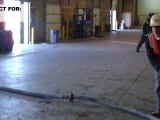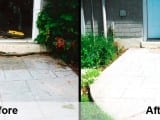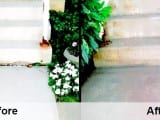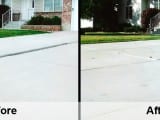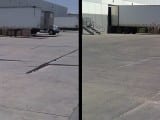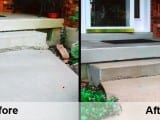
Sand jacking and slab jacking — to someone unfamiliar with the industry, they sound the same. However, these different methods of concrete repair produce vastly different results, and as a property owner, you should know which option is preferable for your purposes.
Is sand jacking or slab jacking the better fit for what you need to accomplish? Learn more about the process of each before you make your decision.
How Does Sand Jacking Work?
Sand jacking is done by first lifting the sunken concrete surface with jacks, pipes and braces. If the slab is accessible on both sides, no holes are drilled on top. Dry limestone sand is blown underneath the slab to shore it up. If holes were drilled to accomplish this, they are refilled with concrete afterward.
Even though many companies advertise that the sand that goes underneath the previously sunken slab is compacted, they do not use moisture to complete the project, and sand cannot be fully compacted without it.
How Is Slab Jacking Different?
Slab jacking professionals take a different approach. First, small holes are drilled in targeted sections of the sunken slab. Next, the exact pressure needed to lift the concrete is calculated. A grout pump is used to slowly inject stabilizing material beneath the slab, raising the concrete to its previous level. The repaired slab can be used safely within a few hours.
With this method, you do not have to lift and raise the concrete separately. One fluid repair allows the work to be completed quickly and effectively, and the grout that goes beneath the concrete is strong and stable, providing a long-term solution.
Which Method Is Right for Your Concrete?
When it comes down to making your decision, you want to invest in a repair method that will last, not a quick fix that will only warrant more repairs down the line. This is why slab jacking is the best option.
Erosion due to water flow can quickly ruin a sand-jacking job. Relying on sand and soil alone is what caused the concrete damage in the first place.
When you choose slab jacking, your concrete’s risk of repeated sinking is dramatically lowered. This method fills the underlying voids with a solid material that will not wash away the next time it rains. The lightweight material is pumped underneath, naturally flowing to fill each gap, and hardening into a dense foundation that retains stability over time.
It does not matter how expansive the concrete surface — it works for a warehouse floor, patio or a pool deck and other surfaces.
Is this the type of repair you’re looking for?
Contact Lift-Up Concrete for more information on slab jacking and how this long-lasting restoration method could resolve your sunken concrete issues.

